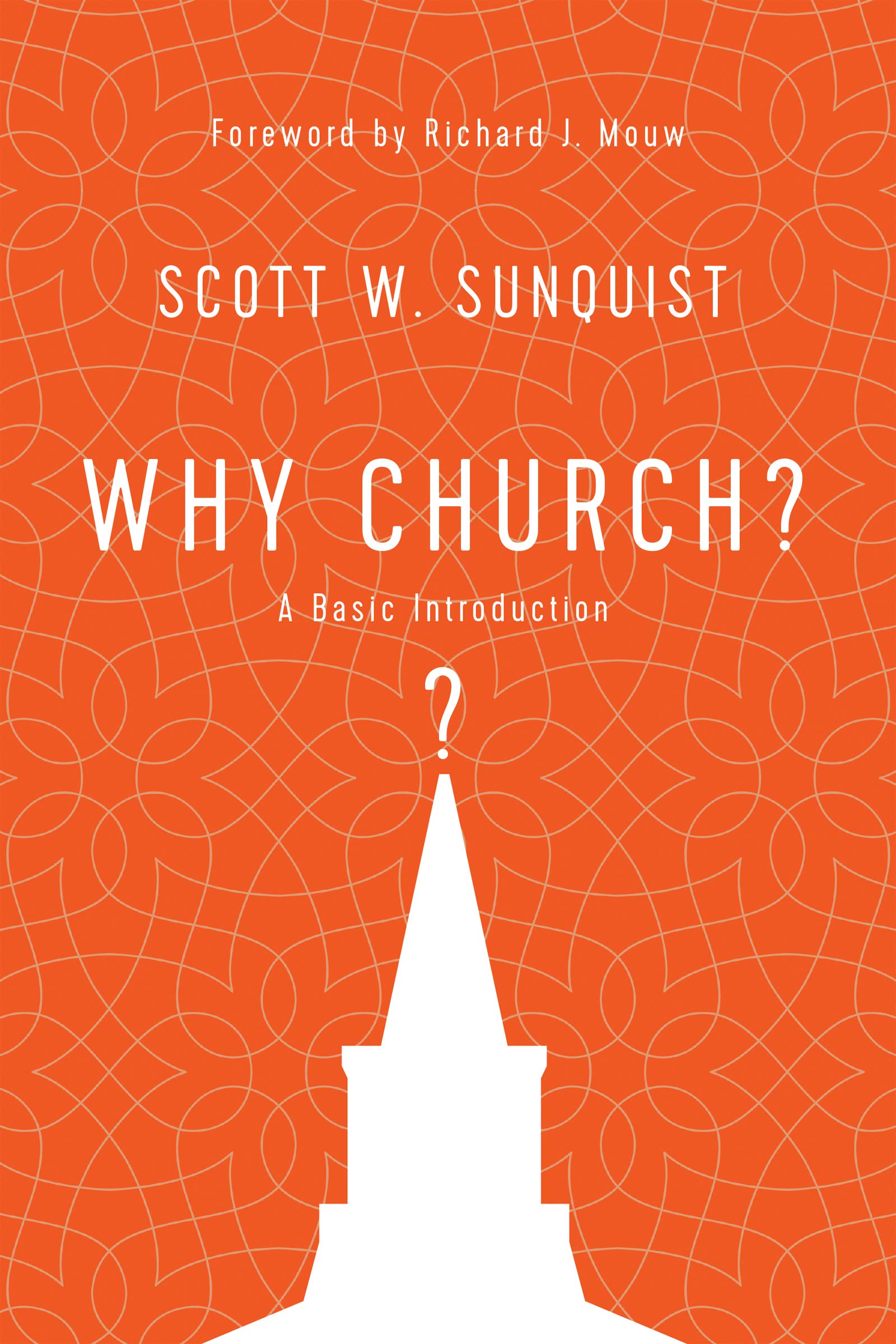“Why Church?” I would wager that many Christians would find this seemingly simple inquiry difficult to answer. Even those of us who regularly darken the doorstep of our own local churches. The truth is, we rarely stop to think deeply about the Church (the global body of believers, hence the capital c) or its local expressions, the local churches where we meet. Yet the need to do so is great. For we live in a time when the very act of attending a church service is becoming increasingly odd. When it was once the social norm for Sunday morning.
Coming to God may be profoundly personal, but it is also deeply communal. For it happens in the presence of others who love, nurture and guide us along the way
So we must ask, “Why Church?” What is its nature and function in our modern world?
It is at this point of uncertainty that Scott Sunquist enters the fray and champions the Church’s biblical necessity. He proposes that the Church was instituted by Jesus himself, as God’s only plan for redeeming humanity. There is no plan B, in case plan A (the Church) fails (p9). As the vehicle of God’s redemption on earth, the Church has just two purposes: worship and witness (p159). Candidly, he admits to having used witness rather than mission for the alliteration. The question what this worship and witness may look like for the local church is what drives Sunquist’s teaching. And this teaching is intriguingly organised according to the bodily postures assumed in corporate worship: come, stand, kneel, sit, and go.
Come
The first aspect of worship is the motion to come. This may be countercultural in the era of Uber Eats. But right worship of God implies motion toward God. We come to worship God at church (we show up). We come to Jesus (conversion) and we receive a new identity, becoming part of God’s people (p34). Coming to God may be profoundly personal, but it is also deeply communal. For it happens in the presence of others who love, nurture and guide us along the way. And the group of people that God has chosen for this task constitutes the local church.

Why Church?: A Basic Introduction
Scott W. Sunquist
Why Church?: A Basic Introduction
Scott W. Sunquist
Is a church just something we create to serve our purposes or to maintain old traditions? Or is it something more vital, more meaningful, and more powerful? In this introduction to the nature of the local church, historian and missionary Scott Sunquist brings us a portrait of the church in motion, clarifying the two primary purposes of the church: worship and witness.
I cannot help but wonder if our church members and those visiting our churches accept the notion that to be coming to God is predominantly a communal exercise
Although I’ve often heard it suggested that Africa does not suffer from the rampant individualism prevalent in Western Christianity, I cannot help but wonder if our church members and those visiting our churches – particularly in urban areas – accept the notion that to be coming to God is predominantly a communal exercise. Whatever the current situation on our continent, diverse as it’s bound to be, this is a doctrine and worldview worth defending. Not only because of the very practical help the community may be for one another (p47), but because the heavenly experience of God will ultimately be deeply communal (Revelation 7:9). Sunquist doesn’t address lone-ranger Christianity at any depth. But he makes a strong and beautiful case for the communal and, indeed, biblical alternative.
Stand
Once we have come to church, we stand to praise God. As the gathered assembly, we praise God because of (p60):
- Who he is
- All that he has done
- What he has done for me
- What he will do
I remember a seminary professor teaching us that Israel’s greatest failure was the inability to remember who God is and what he has done in the past. This failure repeatedly lead to unbelief and apostasy. Today, we are not immune to such forgetfulness. Praising God counteracts this tendency to forget. It serves as a vivid, intellectually and emotionally stimulating reminder of who God is, what he has done, and what he will do for his people in the future. Praise therefore sets Christianity apart from many other religions. For it is not an attempt cajole some god into doing good for us. Instead, praise for Christians is “a response to what God has already done” (p59). Thus the solid foundation for all praise is remembrance.
Allowing for emotion in praise should be discernibly different to chasing after it, as forms of paganism do, but it certainly should not be foreign, or be seen as intrusive
A brief word regarding emotion. Sunquist’s insight in this chapter is sagacious: praise ought to involve the whole being. Biblically, emotions are a common experience for God’s people while praising their God, especially joy, and should therefore not be demonised. Of course, allowing for emotion in praise should be discernibly different to chasing after it, as forms of paganism do, but it certainly should not be foreign, or be seen as intrusive (p75). Although Sunquist doesn’t necessarily outline a clear ‘middle way’ for emotion in praise, this can be forgiven. After all, where would the joy be in following a law on this matter?
Kneel
If you’ve been a Christian for any period of time, you’ve wrestled with PSG: pride, sensual pleasure and greed (p99), and many other sins besides. We become acutely aware of this as we come before God and stand in his presence in praise. God is infinitely holy and our wretched sinfulness is undeniable. Struck by this realisation, we cannot help but kneel and turn to God in confession and repentance. Well, we would, laments Sunquist, if only we were given the opportunity to do so in communal worship. He points out that most churches have dropped confession from their liturgy, prayer time and therefore post-service conversations. But this disregards the clear instructions in Scripture about what we are to do with our sin in the presence of God (p90-91; see Psalm 32:3-5).
In the words of Martin Luther, ‘Our Lord and Master Jesus Christ willed the entire life of believers to be one of repentance.’ How then can the church service be an exception to the rest of life?
I understand the cultural pressure against incorporating this ‘relic of the past’ into our worship services. But Sunquist is onto something important here. Communal confession has been surrendered by many churches without a fight, and it may well be time to recover the practice. In the words of Martin Luther, “Our Lord and Master Jesus Christ willed the entire life of believers to be one of repentance.” How then can the church service be an exception to the rest of life?
Sit
Perhaps the most common experience in a church service worldwide is to eventually sit under the preached Word of God. So I will brush past that topic and engage its lesser practiced cousin: sitting under the Word read. Perhaps, if you come from an Independent church like I do, you’ve never heard large swaths of the Bible read on Sunday. The mere thought of such a practice leaves us slightly uneasy. For we are unused to simply listening to a text being read out. Into this scenario, Sunquist rightly affirms that the Bible is not any old text. It is God’s Word to us, inspired by the Holy Spirit, full of power and truth (p110-111). Therefore it ought to be read out frequently, it ought to be read out well, and the practice should be “marinated with prayer” (p112).
To receive the Word of God read is part of the worship of God’s people. And it is fully deserving of being a regular activity in our churches.
This is a helpful directive. Because I’ve discovered that even in churches where the Word is read out, the practice often seems more akin to a religious duty to be fulfilled, rather than an active, life-giving part of the service (Hebrews 4:12). To receive the Word of God read is part of the worship of God’s people. And it is fully deserving of being a regular activity in our churches.
Go
We recall that Sunquist proposes two purposes for the church: worship and witness. The body positions thus far (come, stand, kneel, sit) have highlighted Christian worship. But they are not an end in themselves. They are all parts of a healthy Christian life, with the goal that “one can participate in effective witness (go)” (p139). What exactly this “effective witness” looks like has been the cause of much debate among missiologists. But here I’m thankful for Sunquist’s able guidance across theological quagmires. The local church functions “like an outpost, a signpost or even a blog post… pointing to the kingdom of God” (p143). It does this in two ways: by sharing good news and by exemplifying good news (p144).
Actions alone will remain just that: actions, unless they are accompanied by instructive words. Yet a faith proclaimed without love is equally questionable
Christian witness to Sunquist is “much more than words, but it is never less” (p143). He therefore exposes the folly of oft-repeated line, “Preach the gospel always. When necessary, use words.” It is always necessary to use words (2 Corinthians 4:13). Actions alone will remain just that: actions, unless they are accompanied by instructive words. Yet a faith proclaimed without love, without love that expresses itself in practical ways for the good of those we speak to, is equally questionable. Especially when we consider the witness of men such as Paul and James through their letters (James 2:16). Unfortunately, here Sunquist’s own exegetical backing is limited to a brief remark of Jesus’ own behaviour that we are to emulate (p153), and would have benefitted from further biblical insight.
Conclusion
Sunquist’s book is an edifying read, despite – or possibly because of – its brevity and jargon-free language. The book is filled with poignant anecdotes and illustrations that moved me both intellectually and emotionally. In fact, it even moved me to the point of tears on a number of occasions. For it reminded me of the beauty of God’s redemptive plan for and through his Church. It is noteworthy that Sunquist’s broad approach to the topic intentionally aims at including Protestant, Catholic, Independent and Pentecostal readers. Therefore he provides a bird’s eye view of the Church, rather than a practical guide for any one subset of believers. This may not satisfy every reader, particularly those who have deep-seated denominational preferences, but I think his commitment to unity among all God’s people, who quite literally provide the building blocks of the global Church, is to be commended.
As an introduction to the nature and function of the Church, one that would help you give answer to the question “Why Church” at the dinner table with unbelieving friends, I would certainly recommend this book.











